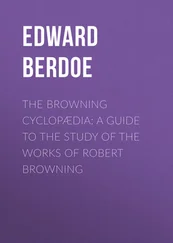In our experience, "good" teachers use the process of pacing intuitively. Teaching is much more difficult if you have to constantly fight your students' models of the world to "reach" them.
A remarkably astute understanding of strategies was shown by a teacher in one of our workshops who had taught special education classes for several years. In her algebra class for slow and handicapped students, a large and muscular black student was having a very rough time working any of the problems on the board or on paper. (Remember that the athletic muscular — or mesomorphic — body type is indicative of a person with primarily tactile kinesthetic (K e) strategies.) Another member of the class was blind — so all of the material presented in the class was also available in braille and raised surface diagrams. As a project, the teacher had the "slow" black student learn to read braille (K§). Not so surprisingly the student's ability to pick up algebra using the braille and raised surface material was many times more rapid than when he attempted to do it visually. The braille paced his natural abilities and strategies with his tactile system (we have often suggested the use of braille and raised surfaces for sighted but kinesthetically oriented persons when we have consulted for special education groups).
Generally, kinesthetically oriented students have a difficult time in the classroom. Feelings, especially those from external sources, don't lend themselves well to what we call "academic" subject areas. One of the classic stereotypes in education is that of the athlete who has a difficult time in the visual and auditory world of
lectures, blackboards and books; and likewise the thin, tense "A" student who has difficulty in the kinesthetic world of athletics. Written tests and the classroom environment are visually and auditorily oriented. In our experience many young people who have been labeled "slow," "handicapped" or "disabled" in this context are far from "stupid" — they simply have different strategies for learning that are not utilized by present techniques of education.
In most cases K eindividuals end up in manual or mechanical occupations like construction, farming or gardening, athletics, assembly line work, auto repair and other jobs where they can utilize their kinesthetic skills.
The teacher mentioned in the preceding example also pointed out that many of her students (most of whom were black) had elaborate "tapping" systems for doing arithmetical operations like addition and multiplication, in which they would perform and keep track of their calculations by tapping their fingers on their thighs or desks (A e t→K e), a process resembling the use of the abacus. When the students were forced to do problems without tapping in this way they were unable to get the correct answers.
It has been our experience that one distinguishing characteristic of black culture is an orientation toward auditory external (A e) and kinesthetic external strategies and attributes. This would account for many of the difficulties experienced by Blacks in educational institutions established and controlled by white western cultures.
People with efficient auditory strategies often have difficulty writing. In fact many of you readers may notice that your writing style and strategy are very different from the way you talk. Both involve externalizing internal experience in a digital form, but speaking and listening are different from writing and looking. One method that we often suggest to people who get blocked easily while writing is to dictate their work first, or to tape record discussions with friends. This can help overcome any inertia that they have toward writing in that they can always begin the process of writing by transcribing the recorded material. In essence they would be employing a strategy that goes from A eto V e. The inverse of this strategy for people who have difficulty speaking is, of course, to write or take notes on their material before they present it orally.
In many contexts it will be difficult to pace the strategies of each individual — especially in large group situations where time is limited. When addressing groups it is important to gear your presentation to include the three major representational systems. Make sure you can present your ideas through each representational system, so that people can hear it, see it and get a feel for it. Being able to communicate your material through each of these different systems is what we referred to as "redundancy" earlier. It greatly decreases chances of miscommunication as well as assuring that you are presenting the material in a representational form that will pace, at some point, everyone in your audience. Lectures and discussions (A e), demonstrations, diagrams, written outlines and other visual aids (V e), and experiential exercises and examples that involve audience participation (K e), tend to make the most well rounded presentational format. Using anecdotes, questions, examples and directive vocabulary (involving sensory specific predicates) that require an individual to access internal experiences in all of his systems will help to insure that you reach all of the members of your class or audience.
Organizing students into various study groups of different orientations, groups that pace different learning strategies, can accelerate group learning processes. One group with an emphasis on discussion, another using experiential exercises, and another concentrating on observation, would be one way of doing this on a general scale.
4.411 Anchoring and Reinforcement in Education.
Anchoring is important in the learning process. The establishment of bad anchors and negative feedback loops is one of the major problems within institutionalized education. For many students tests become anchors for stress or anxiety, and if these are not utilized positively in recall or creativity strategies, then chances are they will inhibit test performance. Because many people are unable to access their resource strategies in this context tests are not a meaningful indicator of how much they have learned. Teachers who use group relaxation exercises before tests or who establish a group resource anchor that can be fired off at the beginning of the test find that test scores improve for many students.
By pairing learning situations with positive 4–tuples (by incorporating jokes and anecdotes, for instance) teachers can strategically program learning to be a positive experience.
In the example given earlier in this section, the teacher who had her slow student learn braille bypassed any negative anchors that he may have associated with learning algebra visually. For some learners simply sitting in a classroom or looking at a blackboard is an automatic negative anchor. We have known people with excellent strategies for mathematics who, when presented with a "word problem" as opposed to an equation, don't access their most effective strategy, because they process problems in word form with a different strategy.
A person in one of our workshops had taken beginning French a total of five times over a number of years, failing the tests each time. He was not a poor student and did well in his other classes. He kept taking French because he needed a foreign language to graduate, and he figured that surely, because he had taken it so many times before, he would eventually pass the class. Besides, his ability to use it outside the classroom kept improving, and certainly this was an indicator that he was learning. Utilizing the process of transderivational search, we discovered that at the beginning of each of his tests, when he was handed the test sheet, an extremely negative 4–tuple would be anchored up, a memory of his first French teacher, whom he despised. This would, of course, short circuit his strategies for recall. As he grew anxious at the thought of failing the test again, the two negative experiences would form a two point loop, each anchoring the other. The effect snowballed such that he could not adequately complete the test. Because this had happened at every test, it also became a self–fulfilling prophecy. Every time he studied for or took a French test an internal dialogue would be triggered that said something like, "Oh no, what if I fail this test … I probably will". Because this kind of dialogue and his negative feelings were solidly anchored to the test context he was continually blocked from accessing his usually effective resource strategy.
Читать дальше











